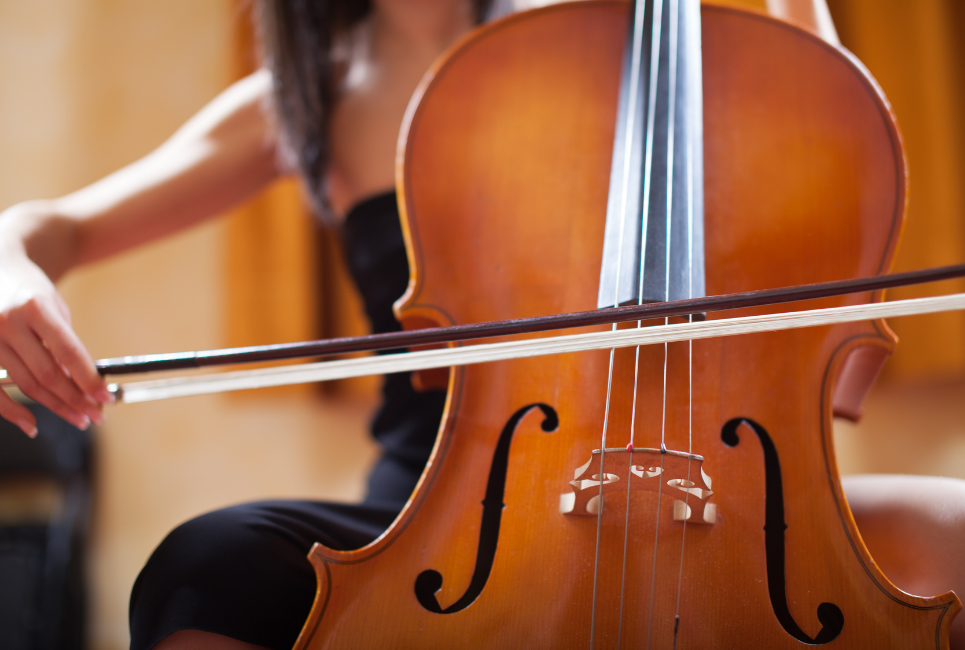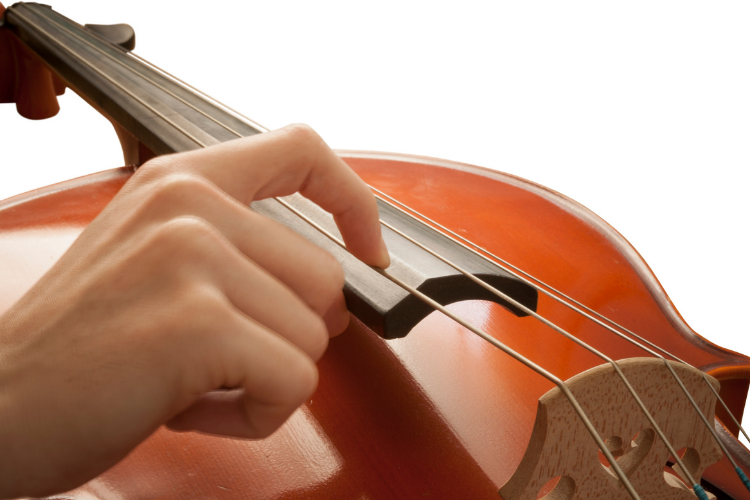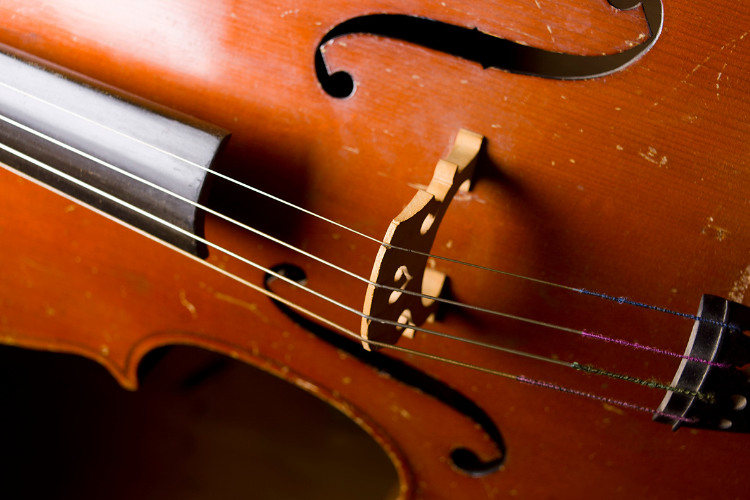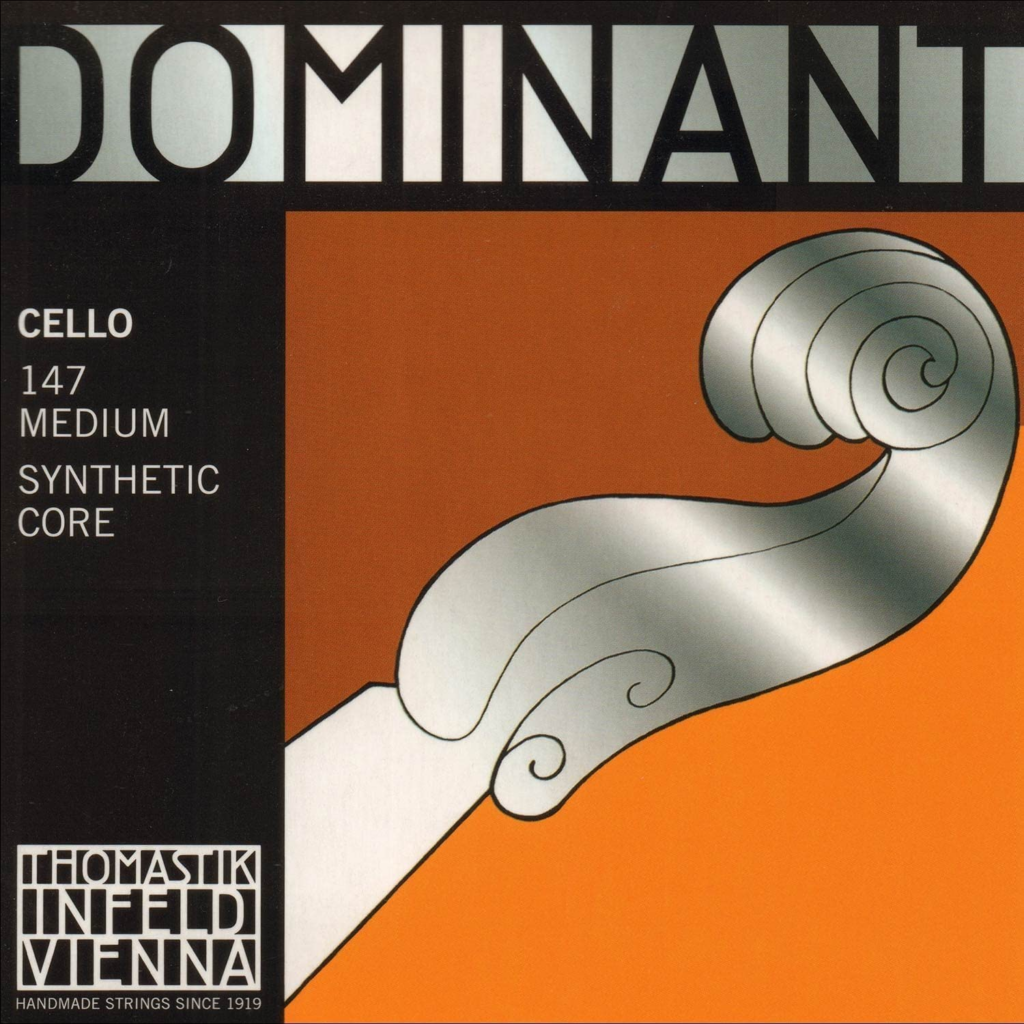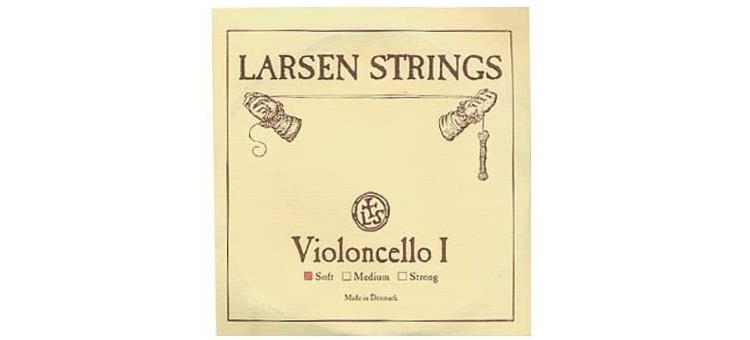- How to Find the Best 5 String Violins - April 21, 2022
- How to Hold a Violin Bow - April 21, 2022
- How to Hold a Cello Bow - April 17, 2022
When you buy an item using one of our links, we may earn a portion of the sale. Strings Guide and some products featured on the site are owned by the same company. Learn More.
Choosing the best cello strings comes down to your situation and your instrument. Knowing how to find the best cello strings for a beginner who has never played an instrument before will be different than knowing how to find the best cello strings for an advanced cellist who is now part of a professional orchestra.
You will have to experiment with different strings to figure out what you prefer with your instrument.
Cello String Types
Start with the three types of strings. The material used for the core influences the sound you get. The “type” refers to the material used to make the core or center of the strings. Some strings are then wound with other material around that core.
Gut Core
Gut cores are the oldest type of string around. All instruments were, once upon a time, made with gut. Today gut core strings are made with sheep gut. Professionals almost exclusively use these strings. The natural gut material gives the warmest sounds with rich overtones, but they are also very challenging to work with.
For example: When I get new strings, I am always very excited to start playing right away. The first time my gut strings arrived, I changed strings on my cello and went to work.
But it was odd. It did not feel right, and the sound was not what I expected. As it turns out, gut strings take about 1 week to “settle” before they work properly. If you do not know that (I didn’t) then you might find yourself plagued with insecurity instead.
Gut core strings are difficult to work with even after they “settle”. Gut cello strings have a slower response than other materials and the sound they make is softer. This is ideal for someone playing classical or Baroque music but not as ideal for jazz or alternative.
Gut strings do not last as long as other strings. They also do not hold their pitch so if you are in humid conditions, move your cello through temperature changes, or sit on stage for too long, you will have to tune your strings.
Check out this video on the ways you can tune your cello:
Synthetic Core
When a cello string is listed as “synthetic core” or “Dominant string” this means the same thing. Synthetic strings were designed in the 1970s to copy the warmer tone you get with gut, but without the hassle of gut strings.
When I swapped for synthetic cello strings, it took 1 day to settle.
Synthetic strings hold their pitch much more effectively, so you do not have to worry about your strings needing tuned every time the weather changes.
Dominant strings are usually made with nylon, called Perlon, and Kevlar. They are wound with different wrappings on the outside like chrome, tungsten, silver, gold, or aluminum. Synthetic cello strings respond very quickly. The tone is rich. The lifespan is even richer. For beginners, these are the strings you want.
Steel Core
Steel core strings are sometimes called metal strings. They are made with either:
- Twisted wire or
- Straight wire
The wire core is wound with different metals. Steel core cello strings are the most stable and long lasting. They give the highest volume as well. If you are an intermediate or advanced player who specializes in jazz, folk, or country music, then the bright and focused sound produced by these strings will be the best fit.
If you play the electric cello, you should work with steel strings.
Note: Steel cello strings are usually the least expensive, so many beginners and students like them based on cost alone. Bear in mind that steel strings are harder to work with than synthetic and not as responsive.
This does not mean that you cannot use them as a beginner, just expect to have to press a little harder and work a little harder with your bow as you become accustomed to their feel.
Can I Combine String Types?
Yes, you absolutely can. I have been doing it for years and many cellists do too. Most cello players use a combination of metal and synthetic strings.
I prefer to use Dominant synthetic strings for my bottom G and C strings. I use Thomastik steel core strings for my top A and D strings.
However, each musician is different. You might only change one of your strings to a different material type or you might use the same core for all your strings but select different wrappings. It will take time to figure out your preferences.
I have played my instrument for decades and yet it was not until the last five years that I really took the time to buy a large string order complete with a range of popular steel core and synthetic (even one set of gut) strings with different wrappings and gauges. I spent a couple of weeks trying new strings here and there to see what I liked best.
What you do not want to do is combine strings meant for different instruments. Avoid taking a violin string, for example, and putting it on your cello. It just will not work, and the notes are different.
Cello String Gauge
Cello strings come in three gauges:
- Light
- Medium
- Heavy
You might see a set of cello strings listed as: D’Addario Medium Steel Core or Larsen 4/4 Alloy Steel Core, Heavy
Alternatively, the company you are looking into might use gauge numbers instead of the classic light, medium, or hard designations.
As a rule, though, the thicker (heavier) a string is, the more tone it produces but the slower its response. The thinner (lighter) a string is, the lower the volume it produces but the faster it responds to your bow movements.
Medium gauge cello strings are the most common. However, each cello is different, and you might discover as you continue with your instrument that a different gauge works better for you.
How Often Should I Change Cello Strings?
Changing strings too often means you do not get the most out of them, so you spend more time and money on strings. However, if you do not change them often enough, it will change the sound you get and even break. You need to consider how often you play and the type of strings you are currently using.
If you do not know how to change a broken string, watch this quick tutorial:
What Causes Cello Strings to Wear Out?
The biggest influence on the lifespan of your cello strings is how often you play.
| If you practice 1 hour every day… | Replace your cell strings every 3-4 months |
| If you practice 1 or 2 hours every week… | Replace your cello strings every 8-10 months |
| If you practice 5 hours per day…. | Replace your cello strings every 1-2 months |
Note: If you do not seal your cello in a case, and it is exposed to temperature fluctuations, or significant humidity, it will shorten the lifespan of your cello strings causing them to wear out or break sooner.
String material also dictates how often you change strings.
- Cello strings made from gut give you the best sound and variety, but they have a short lifespan. You will replace these more often than steel.
- Synthetic cello strings have decent playability for beginners and intermediates and their lifespan is somewhere in the middle.
- Steel typically has the longest lifespan, but steel strings are difficult to play as a beginner.
Note: If your cello is not properly set up, and your strings are not put together correctly, it can cause damage to your cello strings. They will wear out much faster and break more often. Get to know the parts of your cello and how they are supposed to connect.
How to Find the Best Cello String Brands
There are many cello string brands suitable for beginners through professionals. Each brand often has unique models of strings. So, finding the best cello string brands starts with knowing which type of strings you want, whether you want wrappings and if so which type, and what size you need.
You should also consider your current musical requirements; if you are a soloist, there are brands that produce cello strings specifically for soloists who need to be heard on their own just as there are brands that produce cello strings specifically for ensembles.
Pirastro Gold Label Cello Strings
Pirastro Gold Label Cello Strings remains one of the most popular strings for professionals. It is also a great brand if you just one or two strings.
The gold label is their gut line. I like to switch out my C string to these so that I can round out my harmony, but only when I am doing group performances (usually during the Christmas season). This brand is very well known for its tonal flexibility and the power they produce.
Pros
- The strings are medium gauge
- Substantive volume
- Easy to blend into a group
- Bright, gut sound
Cons
- It is available in individual strings
Thomastik-Infeld – Dominant
Thomastik-Infeld – Dominant is the leader for synthetic or Dominant strings. This set is absolutely great for beginners or intermediates. I have used it for years. I love that the synthetic core holds its shape, so it does not fall out of tune every few hours or under hot stage lights.
The cello on which I practice has synthetic strings all year round because they last longer, and they do not need to be tuned as often. When time is a factor, this is a great benefit.
Pros
- Synthetic perlon core
- Maintains its pitch
- Lasts for months
- You can find different gauges and lengths for your cello
Cons
- Not as many winding options
- Limited overtones
Larsen
Larsen has many sets of great cello strings using a Spiro core center. The set featured here is for soloists. They are divided into the A and D string (both of which are made with Spiro core and medium gauge) and the G and C strings (which are made with a tungsten core and are medium gauge).
Spiro core is a specially designed string that has multiple spiral ropes wound together to form a flexible synthetic string. This type of core is known for reducing inertia and increasing musical vibration especially for arco or pizzicato playing.
Pros
- Spiro core tungsten strings
- Three different gauge options
- Perfect for soloists
Cons
- Only available for 4/4 size cello
Out of all these options though, I recommend the Thomastik brand for every player. Larsen and Pirastro provide high quality cello strings, but they are for specific situations like professional players or soloists. Thomastik and the Dominant synthetic cello strings can be used for all situations, and all skill levels.
FAQ
Answer: Professionals use a wide array of strings. Some of the most popular brands include Thomastik-Infeld Spiro core steel strings. These give a brilliant and powerful sound which highlights the lower end of the instrument without compromising volume.
Pirastro, Larsen, and D’Addario are equally popular depending on the core and wrapping you want in your cello strings.
Answer: There are many reputable cello strings for beginners. The same popular brands that produce high quality strings for professionals also produce strings for beginners.
For example, D’Addario has many cello strings but their Prelude set of cello strings are meant for beginners. Similarly, companies like Larsen have many products but the medium alloy steel strings are intended for beginners.
Answer: How long your cello strings last depend on the material. Gut strings do not last very long. You will have to replace them within a few months if you play the cello regularly. Even if you play sporadically, they can go bad within a year. Steel core strings and synthetic strings last longer than gut.
You can usually keep these for a year or two. So, if you get a cello kit that comes with spare strings, they can stay in your music pocket just fine. What erodes your strings is primarily dirt and oil from your hands. To help offset this, wash your hands before you play or practice each time.
Conclusion
In conclusion, knowing how to find the best cello strings can set you up for musical success. With strings appropriate for your instrument, and for your skills, you can produce quality sound. As a beginner, stick with synthetic strings for your cello so that you can focus on your bow movements and learning to read music.
As you become more comfortable with your instrument, you can try steel strings. Professionals should consider high quality steel or gut strings to produce more overtones and warmer sounds, especially for classical or chamber music. The best strings will fit your instrument and your musical needs.
Further reads:

